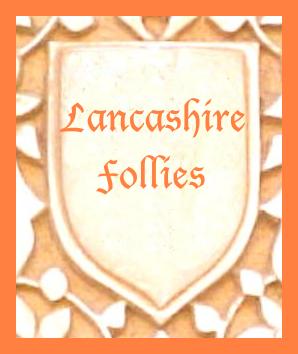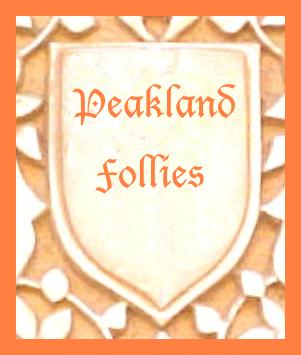

"Folly" - "a useless and needlessly extravagant structure". So says the dictionary.'Extravagant' perhaps, but only 'useless' in the very strictest of terminologies, for how can something that brings pleasure, delight and fascination, and which stretches our imagination and offers a fine prospect of the landscape be 'useless'? Follies are a joy. Obscure and mysterious, they create a mythology that is entirely their own. Often in connection with them we hear stories of eccentric and quirky human behaviour which are sometimes factual... and sometimes not! Above all, these structures are shrines to the cult of the rugged individualist, and are representative of the human need to leave ones's mark upon the landscape in a fantasy of 'Ivory Towers and Dressed Stones'.
This website, based on my two Cicerone Guides of the same name is essentially a collection of rambles based around follies. It does not purport to be exhaustive and anyone seeking further information will find ample scope for study in the bibliography at the back of the published book. My main object has been the satisfaction of a long held curiosity. On seeing a 'folly' the questions on most people's lips are 'how do I get to it?,' 'Why was it built?' and 'who built it?' This website aims to answer some of these questions, and also to offer some enjoyable and informative rambles into the bargain. Each folly visited is incorporated into a circular walk based on your parked car. The walks are all free... free access, free parking. It is an annoyance to me to have to fork out for the privelege of enjoying the countryside, so I have based my walks only around those places which enjoy free access.
Some of the rambles are suitable for small children and where this is the case they are suitably indentified. Each walk contains, in addition to the follies, general historical and topographical information and detailed commentary concerning places of interest encountered en route. Each walk is supported with 'how to get there' information, and detailed, hand drawn maps.
'Follies' visited fall into two distinct types. First are the 'prospect towers', most commonly to be foundon Pennine hilltops. These usually contain a staircase leading to a lookout point from which visitors may enjoy the view, which is, of course their raison d'etre, despite being usually constructed on the pretext of commemorating some famous (or not so famous) person and/or event. Our second type of 'folly' is the 'topographical curiosity'. Mock ruins and 'sham castles' fall into this category, along with bogus 'prehistoric hill figures' and 'standing stones', grottoes, temples and pyramids. Many of these are to be found in the parklands and estates of great houses.
One of the greatest pleasures of my 'folly hunting' expeditions has been the topographical correlation of one walk with another. From Castle Hill, Huddersfield, for example,you can see Stoodley Pike. From Stoodley Pike you can see Wainhouse Tower etc. etc. You will soon find that the visiting of follies not only broadens your knowledge of the curious and the obscure, but will also contribute to your understanding of the landscapes and topography of Northern England.
Follies are like white elephants. Some of them are put on show to the public, some are stuffed and preserved, but by far the majority of them are left to rot and decay in that great elephant's graveyard of 'Private Property'. If they were mediaeval castles or Roman remains the Department of The Environment would protect and restore them as part of our national heritage, and open them up to the public, but being mere 'follies' they are left to crumble away in overgrown obscurity. Many follies are lost forever, (the Ladies Folly at Tankersley Park is a good example) and others are well on the way to dust and oblivion. How many more must disappear from our landscapes before someone recognises their place in and importance to our national heritage and sets out to restore and preserve them for posterity before it is too late? The greatest enemy to the survival of the folly is our ignorance of its existence, and if my work can do even a little towards dispelling that darkness and instilling an interest and enthusiasm where previously there was none, then that alone will have served a useful and worthwhile purpose.
Follies are mysterious and inscrutable. They also have an infinite variety. Some of them will be found on the 'beaten track' while others you will find to be secluded and hard of access. In some cases the folly is the centrepiece of an average ramble, while in others it takes second place to an excellent walk. Sometimes you will get the best of both. The landscapes visited range from white limestone uplands to sombre pennine moors, from the Cleveland Hills to the Dark Peak. When you have undertaken all the 'days out' featured in this book you will have sampled a slice of virtually every landscape in Yorkshire. All you need is a car, good boots and a desire to seek out the odd and the unusual. My guides will do the rest.




